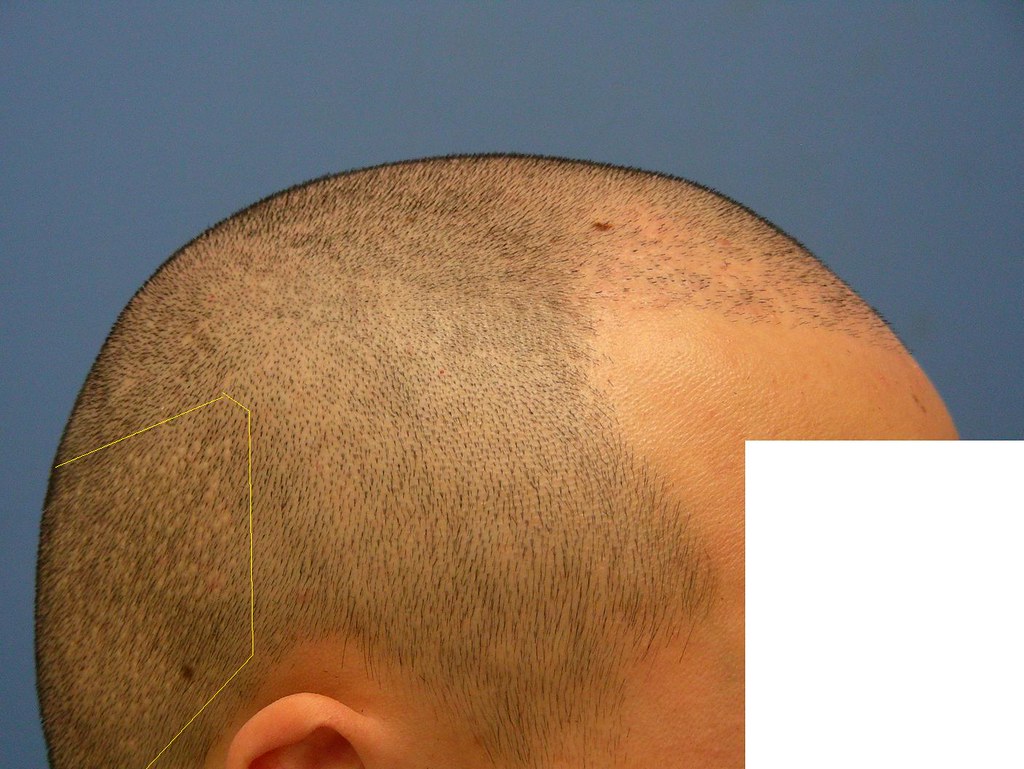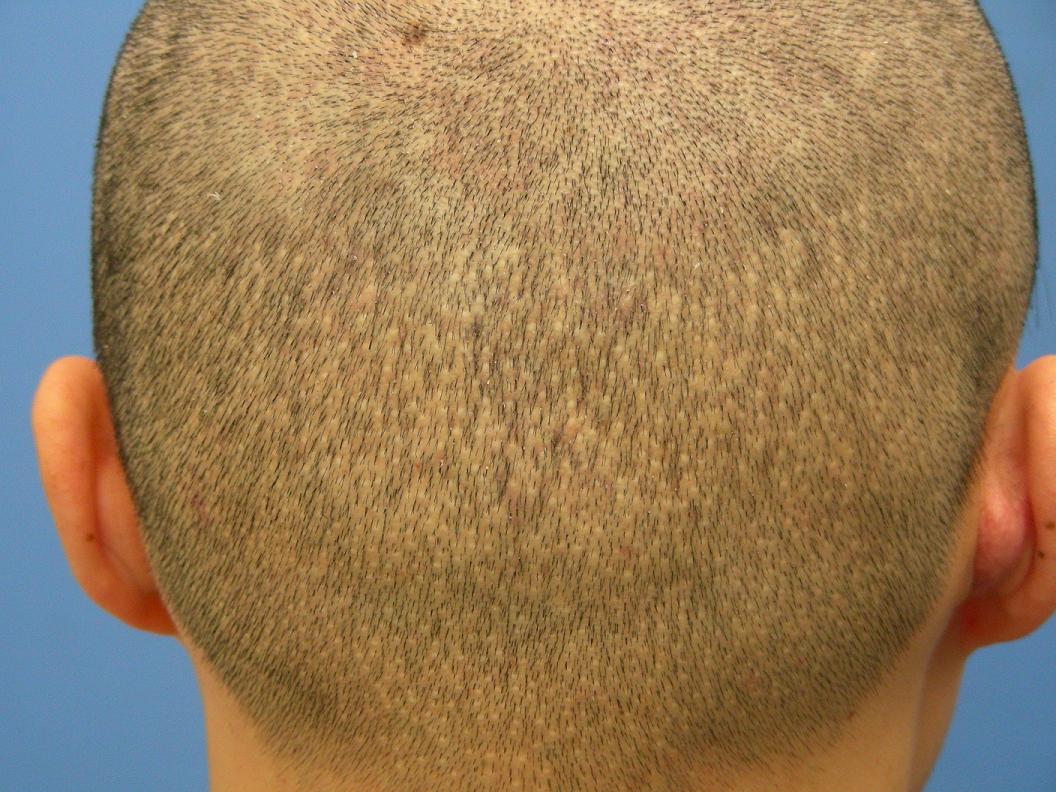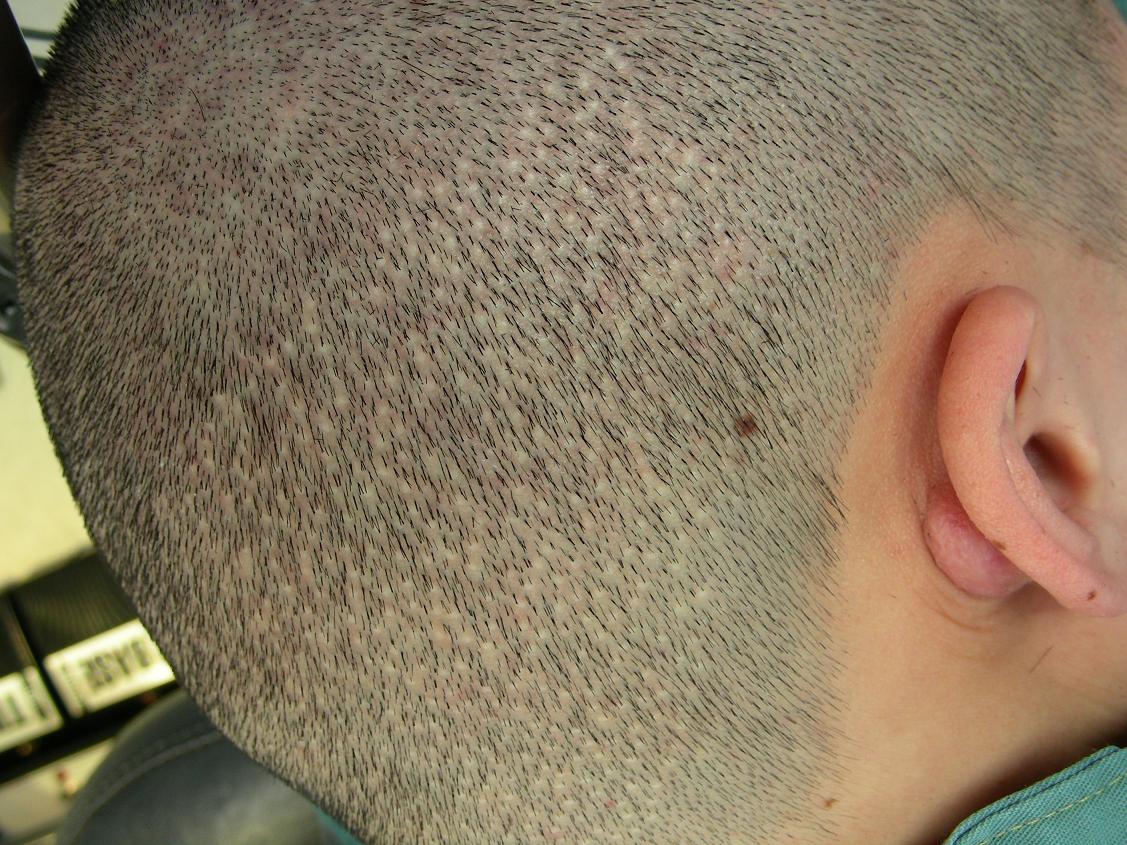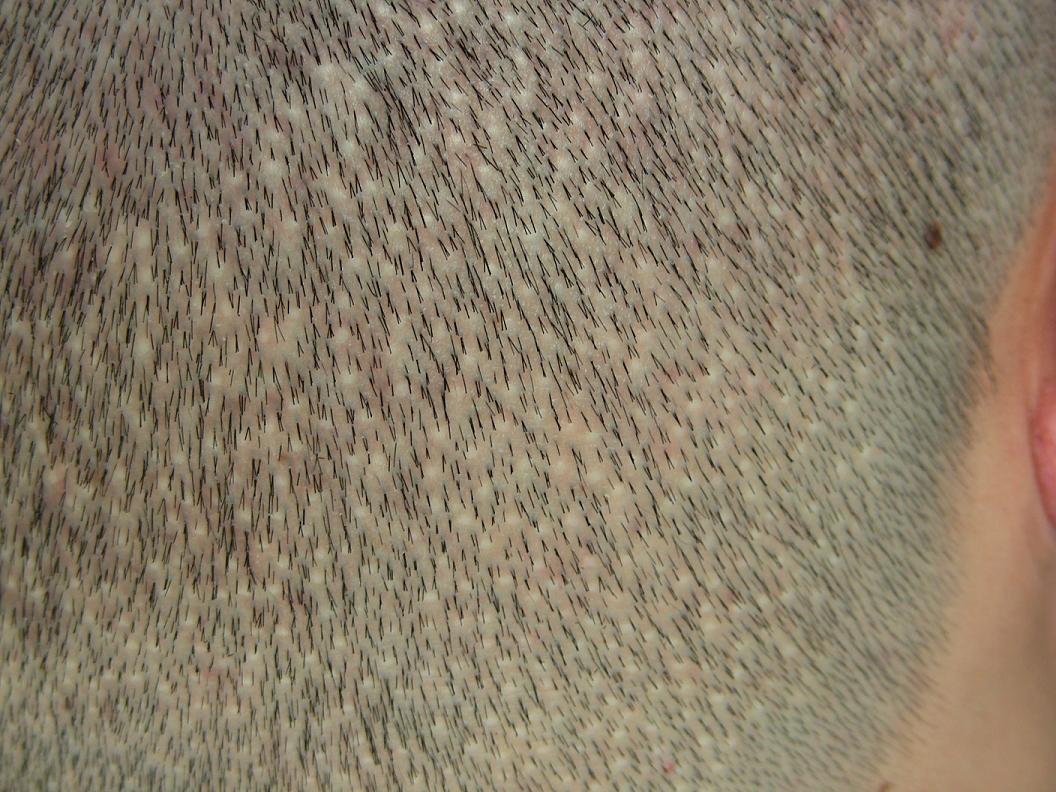The images below show a patient that was in our office today. He previously underwent a procedure for roughly 2000 FUE grafts with the idea that it was a scarless (or at least no visible scars) procedure and that he would be able to wear very short hair styles with no evidence of surgery. At worst he could expect "hypo-pigmentation" or in layman's terms an absence of pigment.
FUE is supposed to also be more economical than strip. The argument is centered on the option of being able to "cherry pick" larger grafts so that more coverage is achieved with fewer overall grafts thus lowering the final cost when calculated on a cost per graft system. We find this to not be the case as part of this calculation assumes consistent growth. We find many cases of FUE where overall growth has been disappointing at best. Below is one case where we believe no more than 25% of the grafts placed actually grew in. Note the large spaces between the grafts in the frontal hairline.

What is "hypo-pigmentation" though? Simply an absence of pigment? Scar tissue has no pigment either so it seems logical that the two terms may be more synonymous than previously thought. Regardless this patient can no longer wear the short hair style he prefers because of these spots with zero pigment, better known as scarring.





Hair transplantation is a surgical procedure no matter how you look at it. Be it strip or FUE your skin is being cut with one and only one goal in mind. To get to the good hair that you need so you can place it on top with the idea that you will be less bald and it will look natural. Period. Your main objectives should be excellent growth and naturalness. The understood trade off is that for the benefit of having more natural hair where you need it you will have, somewhere, evidence that surgery has been performed but if that evidence outweighs the benefit as shown above then the question becomes one of whether or not FUE truly is more "economical".
FUE is supposed to also be more economical than strip. The argument is centered on the option of being able to "cherry pick" larger grafts so that more coverage is achieved with fewer overall grafts thus lowering the final cost when calculated on a cost per graft system. We find this to not be the case as part of this calculation assumes consistent growth. We find many cases of FUE where overall growth has been disappointing at best. Below is one case where we believe no more than 25% of the grafts placed actually grew in. Note the large spaces between the grafts in the frontal hairline.

What is "hypo-pigmentation" though? Simply an absence of pigment? Scar tissue has no pigment either so it seems logical that the two terms may be more synonymous than previously thought. Regardless this patient can no longer wear the short hair style he prefers because of these spots with zero pigment, better known as scarring.





Hair transplantation is a surgical procedure no matter how you look at it. Be it strip or FUE your skin is being cut with one and only one goal in mind. To get to the good hair that you need so you can place it on top with the idea that you will be less bald and it will look natural. Period. Your main objectives should be excellent growth and naturalness. The understood trade off is that for the benefit of having more natural hair where you need it you will have, somewhere, evidence that surgery has been performed but if that evidence outweighs the benefit as shown above then the question becomes one of whether or not FUE truly is more "economical".

Comment